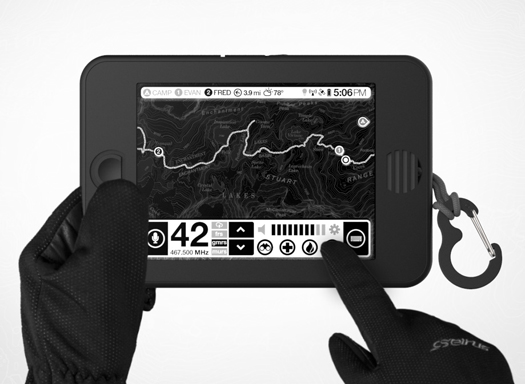Would You Give This Company $250 For A Survivalist’s E-Ink Android Tablet?
Earl is a new kind of tablet--designed specifically for use in the wild.

We may earn revenue from the products available on this page and participate in affiliate programs. Learn more ›
Android tablets are mostly dull; Asus, Samsung, Sony, and the rest are typically just pumping out versions of the same platform. Earl, from a startup called Sqigle (sic), is quite a bit different: it’s designed top to bottom for use in the wild.
To that end, it starts off with an electrophoretic display, an exceedingly low-power technology that’s used in the black-and-white ebook readers like the Kindle and Nook. A tablet’s screen drains the most battery, by far, so using a low-power screen like this is a great way to extend the battery life. Of course, that means you also get extremely low refresh rates and no color, so you can pretty much forget about watching video on this thing, but as a wilderness guide? That’s not nearly as important as battery life.
Touchscreens also work differently with electrophoretic displays; a regular LCD touchscreen uses capacitive technology, which senses the minute electrical charge your finger gives off. Touchscreen electrophoretic displays use infrared sensors, so any contact that breaks the infrared beam triggers a reaction. It’s less precise, but it means you can use gloves.

Earl Tablet’s Back
Then it’s got an unusual array of sensors, from internal weather sensors (barometer, humidity sensor, thermometer) to FRS, GMRS and MURS radio receivers to talk over long distances to a regular AM/FM radio. It’s also “extremified,” capable of withstanding dusting, water, and both high and low temperatures. And it’s got a solar panel on the back, which typically would be an inefficient way to charge such a power-hungry gadget as a tablet–there’s a reason tablets don’t all have solar panels on them–but for a lower-power device, it could actually provide enough power. (The company says it’ll charge the 3,000mAh battery in five hours, which sounds a little dubious to me.)
I’ve never tried Android on an electrophoretic device before; those touchscreens tend to be finicky and imprecise, so I’d imagine it could be difficult to use an operating system designed for a different screen technology. But less-complex selection should be fine.
The project is currently being crowdfunded, but in an unusual way; they’re not going through Kickstarter or Indiegogo, instead choosing a sort of provisional pre-order strategy. You plunk down $250, and if the project gets funded, you get a tablet. If not, you get refunded. Tyson Fok, the director of strategic programs for the Earl project, tells me that this decision came from a desire for more intricate page designs, which sounds insane to me–the Earl page is not that complicated, Kickstarter’s pages look nice, and also who cares–and, more sensibly, that Kickstarter takes a cut of the funding. But I’d be very suspicious to plop down $250 for a startup; the assurance that you won’t get screwed is part of the ostensible goal of Kickstarter.
Anyway, check out the project here; funding will go until June 9th, if you’re interested.